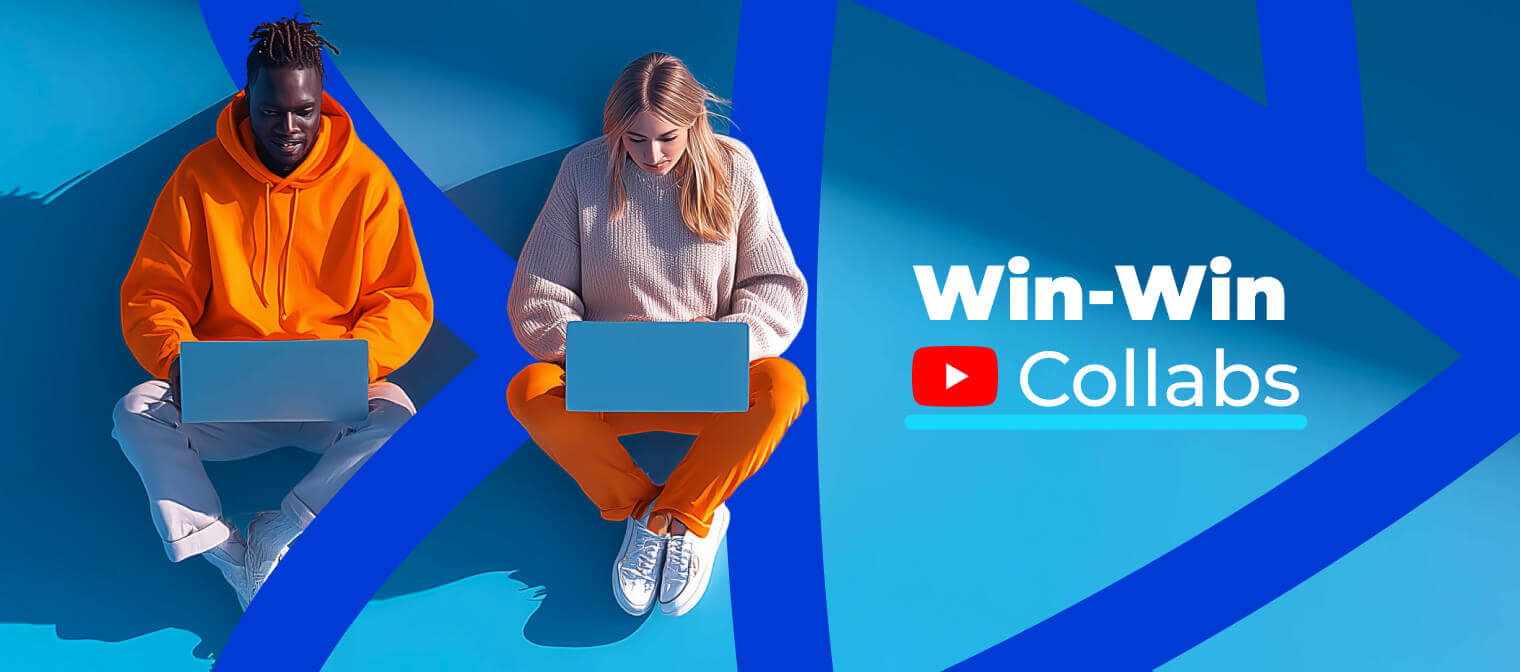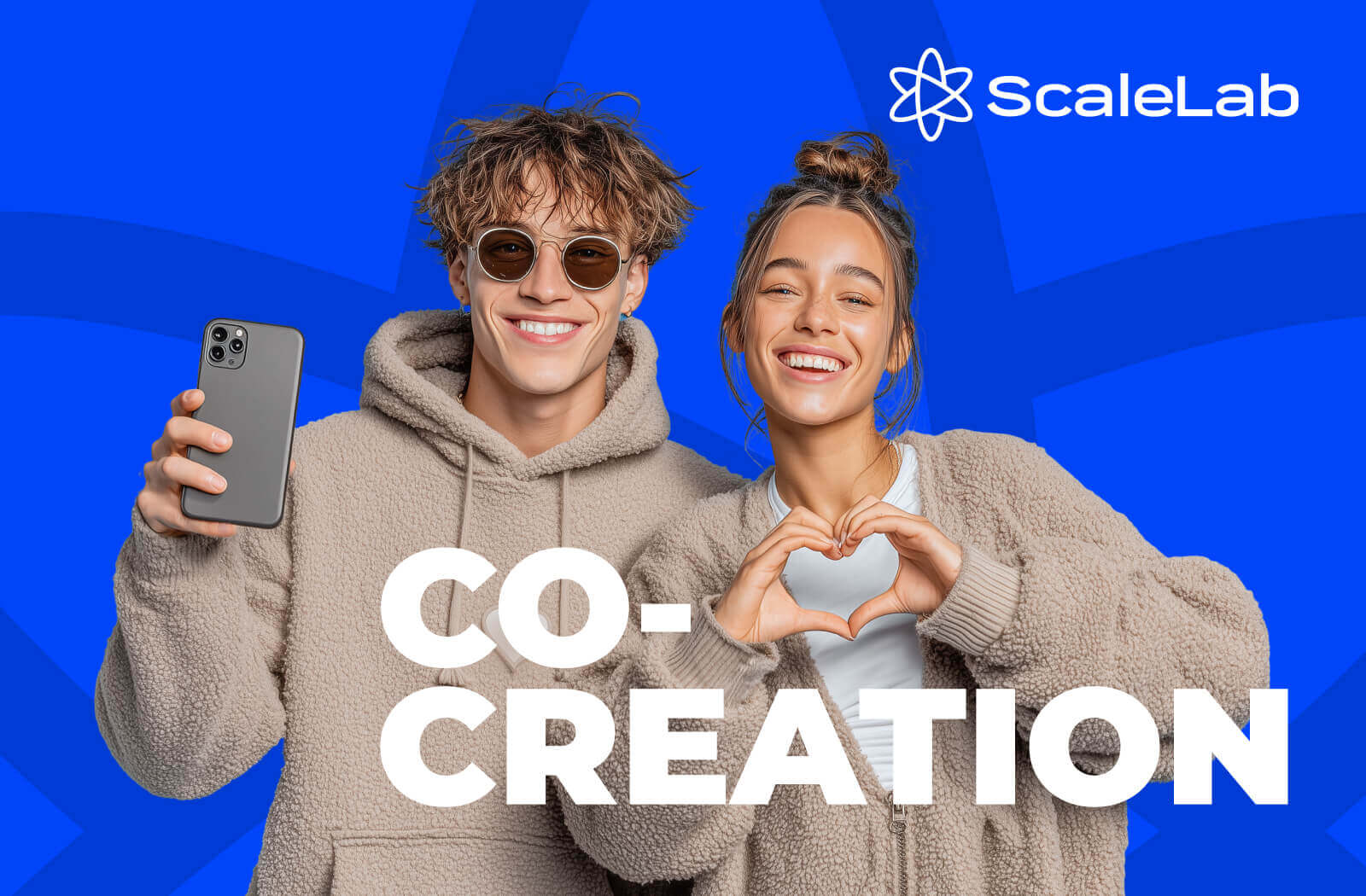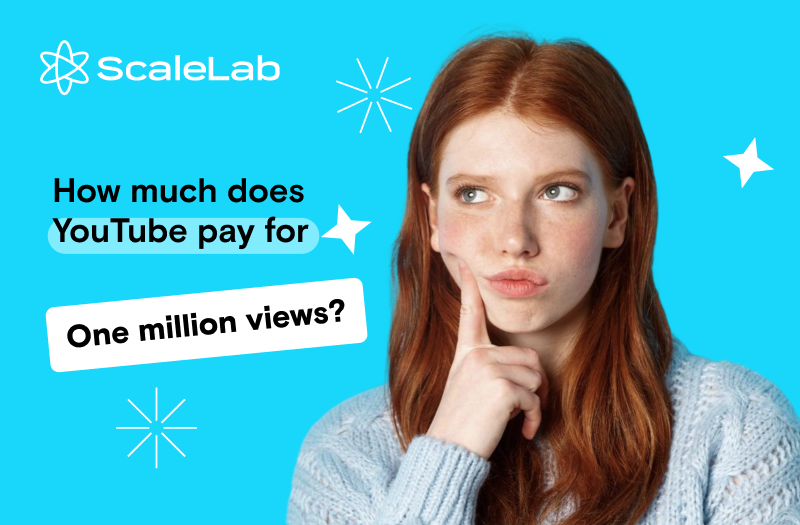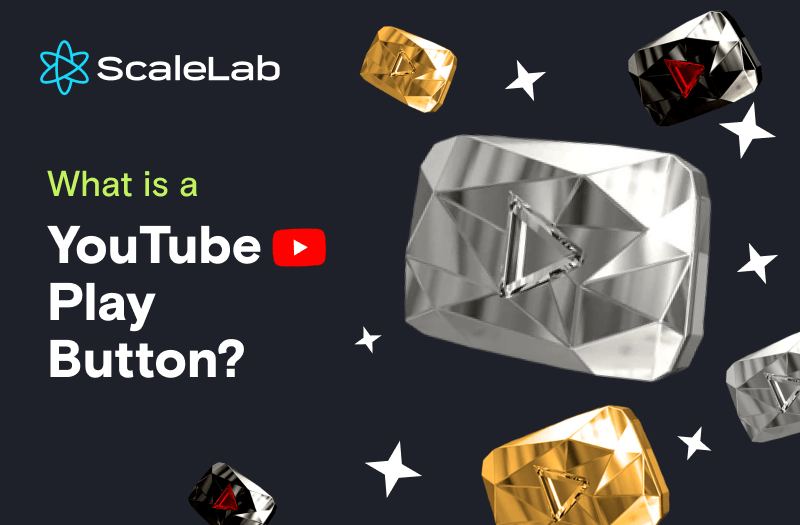YouTube collaborations are one of the strongest ways to grow your channel. They help you reach new audiences, improve content quality, and build real partnerships.
But most collaborations fail because of vague goals, poor communication, or mismatched creators.
Here’s how to collaborate on YouTube in a way that actually works.
YouTube Collabs You Can Learn From
Here are some examples of YouTube collaborations done well, what worked, and why.
Epic Rap Battles of History – Master Chief vs. Leonidas
Two creators bringing fictional characters to life in a dramatic, comedic video. Nice Peter and Epic Lloyd blended their styles, leaned into shared fan culture (Halo meets 300), and pulled in a guest YouTuber for extra flavor.
The result: a memorable collab that worked on both the content and production level.
MrBeast’s “50 YouTubers Fight for $1,000,000”
This event-sized project is a collaboration in scale. Fifty creators from around the world came together, each maintaining their own identity while contributing to a unified, high-stakes experience. It sparked cross-promotion across channels and hit 70 million views in just 24 hours.
Joel Berghult (Roomie) & PewDiePie – “Congratulations”
This musical collab is personal, creative, and authentic. Roomie made the track with voice samples from PewDiePie, then released it as a joint effort. Every artist brought something essential: melody, voice, and platform, and the result resonates because of that balance.
Reanimated Collaborations (Fan Projects)
These are wild, animated shows remade by entire communities. For example, the Mama Luigi Project (227 animators) or Kirby Reanimated Collab (300+ artists) had each creator animate a segment. The project becomes a showcase of diverse styles under one theme, creative collaboration on a different level.
1. What makes these collaborations stand out:
Epic Rap Battles of History
Shared theme, matched styles, tapped into the creator’s own interests and communities.
MrBeast’s 50 Creators Video
Extreme coordination, participatory content, and visible credit to every creator.
Roomie & PewDiePie Song
Authentic relationship, co-creation rooted in shared identity and mutual respect.
Reanimated Fan Projects
Large-scale community coordination, stylistic variation with a unifying theme.
2. How these examples teach real YouTube collaboration strategies:
Shared purpose matters
Every example had a clear reason for the collab, from narrative match-ups to large-scale events. Good content, shared energy, clear audience value.
Each creator contributes something unique
They added real value: comedy, reach, personal identity, and creative talent.
Everyone gets visible credit
Especially in MrBeast’s video, but also in musical collabs and fan projects, viewers can trace back to every collaborator. That’s mutual value in YouTube partnerships.
Structure and planning pay off
Behind-the-scenes, these videos were planned with care, from editorial flow (Epic Rap Battles) to logistics (MrBeast) to style guidelines (reanimated collabs).
Want help with growing your channel?
We can help you grow. Whether it’s monetization, localization, channel audits, or strategy, that’s our thing. Reach out to us if you want to make the most of your content.
Where to Find Collabs
DMs are slow. Discovery isn’t. If you want creator partners who “get it,” start where your overlap already exists, and make the first touch so easy it’s a yes by default.
Start with Your Analytics (your warmest leads)
Open Audience → Other channels your viewers watch. That’s your ready-made short list. If they already feed you Suggested traffic (or you feed them), you’re halfway to a collab. Pick 5, note a video of theirs your audience already watches, and pitch a two-part idea that connects both channels.
Local IRL Still Works
Media clubs, city creator meetups: great for hosts, editors, and recurring formats. Bring a 60-second format sizzle and a calendar. Book two shoot days on the spot.
Go Where Over 40,000 Creators Meet
Looking for how to find YouTube collaborators who get it? Go where they are. Networking with YouTube creators at events is faster than months of DMs.
Try to attend:
- VidSummit: October 7-9, 2025, in Dallas. All about the creator business: raw tactics, best minds, big networking.
- TwitchCon: October 17-19, 2025, in San Diego. Streamers’ paradise with fans and gaming brands.
- NAB Show: October 22-23, 2025, in New York. Gear and tech heaven for cameras, tools, and future setups.
- Creator Fest: October 23, 2025, in London. European creator mashup with collabs, brands, and platforms.
- WebSummit: November 10-13, 2025, in Lisbon. Where tech, startups, and creators collide on the biggest stage.
- Paris Creator Week: December 9-10, 2025, in Paris. Spotlight on the global creator economy and European platforms.
- 1 Billion Followers Summit: January 9-11, 2026, in Dubai. Huge creator and industry meet-up with 15K attendees.
We’ll be at most of them. If you’re coming, let’s meet.
Attending these events makes partnering with YouTube creators easier. Many collaborations begin with a simple hallway chat.
Discords, but Niche-First
Skip the giant “creator” servers. Join topic servers (finance, camera gear, speedrunning, VFX). That’s where formats form.
Drop a 30-second channel trailer and a one-line collab prompt in #collabs. Offer one thing you can do for them first.
Social Open Calls that Don’t Sound Thirsty
On X/Threads, post: niche + average views + one-line concept. Then search your niche for “collab?” and reply with a hook.
Keep it stupid simple: “Part 1 on mine (X), Part 2 on yours (Y), live redirect both ways.”
Start with Why, Not Who
Too many creators begin collaborations by asking, “Who can I collab with?”
Wrong question. The real starting point is: Why should we collaborate? What can we make together that we can’t make alone? If the answer is "more exposure," you’re not thinking big enough.
Successful YouTube collaboration strategies come from creative overlap. Not just the same niche, but with the same obsession. If you're in finance, are you deep into crypto, budgeting, or real estate, then collab with another "finance" creator only works if your approach, tone, and pace fit.
Think about what your audience already likes from you, then imagine what a new perspective or personality could deepen that experience. You’re not adding a guest. You’re creating a new story.
Look for Fit, Not Fame
Big creators rarely collab with small ones unless they know them well. Not because they’re snobs, but because it’s not a balanced trade. Big creators don’t need exposure. They need angles, originality, and clarity.
You don’t need massive names. The best collaborations often come from creators at the same level, who understand each other's style, are hungry, and can move fast.
Growing a YouTube channel with collaborations works best when both sides benefit. Find partners who match your energy, not just your numbers.
Make the Pitch Frictionless
If you’re reaching out cold, keep it sharp.
- Know their content. Prove it.
- Offer 2-3 collaboration ideas for YouTube that they can say yes to quickly.
- Define the benefit. What’s in it for them?
- Show the path: timeline, filming format, workload. No surprises.
The best collaboration practices for YouTubers involve clarity. The more work you do upfront, the easier it is for them to say yes.
Try Different Collaboration Formats
Some of the most effective YouTube collaboration strategies involve working across niches. A food creator works with a travel vlogger. A fitness channel appears in a comedy sketch. These YouTube niche collaborations stand out because they are unusual.
Treat the Video Like a Product
Don’t shoot and wing it. Plan. Script if needed. Know what you’re making before the camera rolls.
The content should work even if the viewer doesn’t know either of you. That means strong hooks, good pacing, real structure, and a reason to watch to the end.
Planning YouTube collaboration videos is part creativity, part logistics. The tighter your concept, the better your outcome.
Keep the Content Connected
The most effective YouTube collaboration strategies make the audience want to watch both videos. A common format is a split video series. For example, part 1 lives on your channel, and part 2 on theirs.
Let’s say you do fitness, and your collab partner is into nutrition. You film a workout plan on your channel, and they cover a meal plan on theirs. It’s clean. Each video supports the other. That’s how to use cross-promotion to grow your YouTube audience.
More examples:
- Q&A Collabs: You ask each other audience questions and split them across both channels.
- Challenge Collabs: You each complete the same challenge, but in different ways.
- Reaction Collabs: You react to each other’s content or a trending topic.
These ideas are simple to execute, and viewers enjoy the interaction.
Map It Out Like a Real Project
Here’s a step-by-step guide to planning a YouTube collaboration video:
- Set the concept. Both sides should agree on the format, tone, and goals.
- Decide on the tasks. Who’s filming what? Who’s editing?
- Pick a timeline. Confirm deadlines that work for both.
- Agree on posting. Align the dates and thumbnails so they feel connected.
- Cross-promote. Mention each other in the videos, link across all platforms.
The more you write down, the fewer surprises later. Clear communication is key to successful YouTube collaborations. The smoother your process, the more likely this becomes a recurring thing.

Repeat > One-Off
One video is a moment. A series is a relationship. If the collab works, plan more. Viewers love returning characters. If your dynamic clicks, double down.
Recurring collaborations build YouTube partnerships that last. It’s also easier on production. Less back-and-forth and more chemistry.
If a Collab Doesn’t Feel Natural, Skip It
Audiences can tell when creators don’t really work well together. Forced collaborations don’t feel right. Viewers disconnect. Only collaborate when the content is strong enough to stand alone.
Smaller Channels Are Often Stronger Partners
Don’t ignore creators with smaller followings. The benefits of collaborating with smaller YouTube creators are real: tighter engagement, faster turnaround, and often more creativity.
They’re hungry, willing to experiment, and usually more open to win-win deals.

Real Collabs Lead to Real Growth
Collaboration is surfing the same wave together by joining forces.
The best collaboration practices for YouTubers are simple: start with interest, build trust, plan clearly, and keep the content connected. When you get it right, everyone wins: more views, better engagement, and real mutual benefits in YouTube partnerships.
If you're looking for guidance on growing your YouTube channel, let’s talk.
We’ll help you move forward.



